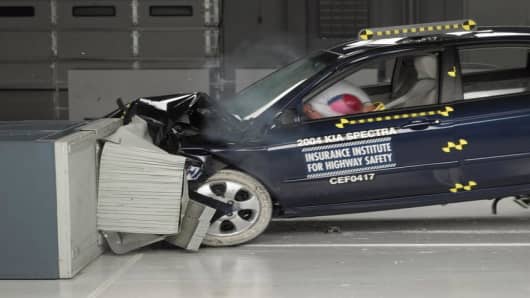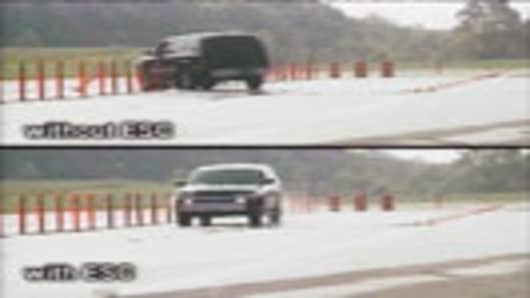Since the mid-1970's the Insurance Institute for Highway Safety, a nonprofit research and communications organization funded by auto insurers, has been focused on researching how to prevent motor vehicle crashes and how to reduce injuries in current incidents. Opening its Vehicle Research Center in 1992, equipped with its own crash test facility, the IHHS has been able to carefully scrutinize all factors involved with vehicle crashes.
The institute's latest status report of driver deaths released Thursday shows about 125,000 occupants of passenger vehicles died in crashes during 2002-05. The risk of death to vehicle occupants and drivers, the latter of which comprise most of the fatalities, the report says, can vary between the type and body style (2-door car, 4-door SUV) and the vehicle's size.
Of the 15 vehicles with the lowest driver death rates listed in the report, none are small models. And as would follow, 11 of the 16 vehicles with the highest death rates are small models -- and none classified as large or very large.
The general rule of thumb being: the heavier and larger the vehicle, the safer its occupants will be when in an accident.
Although there are exceptions to this rule.



